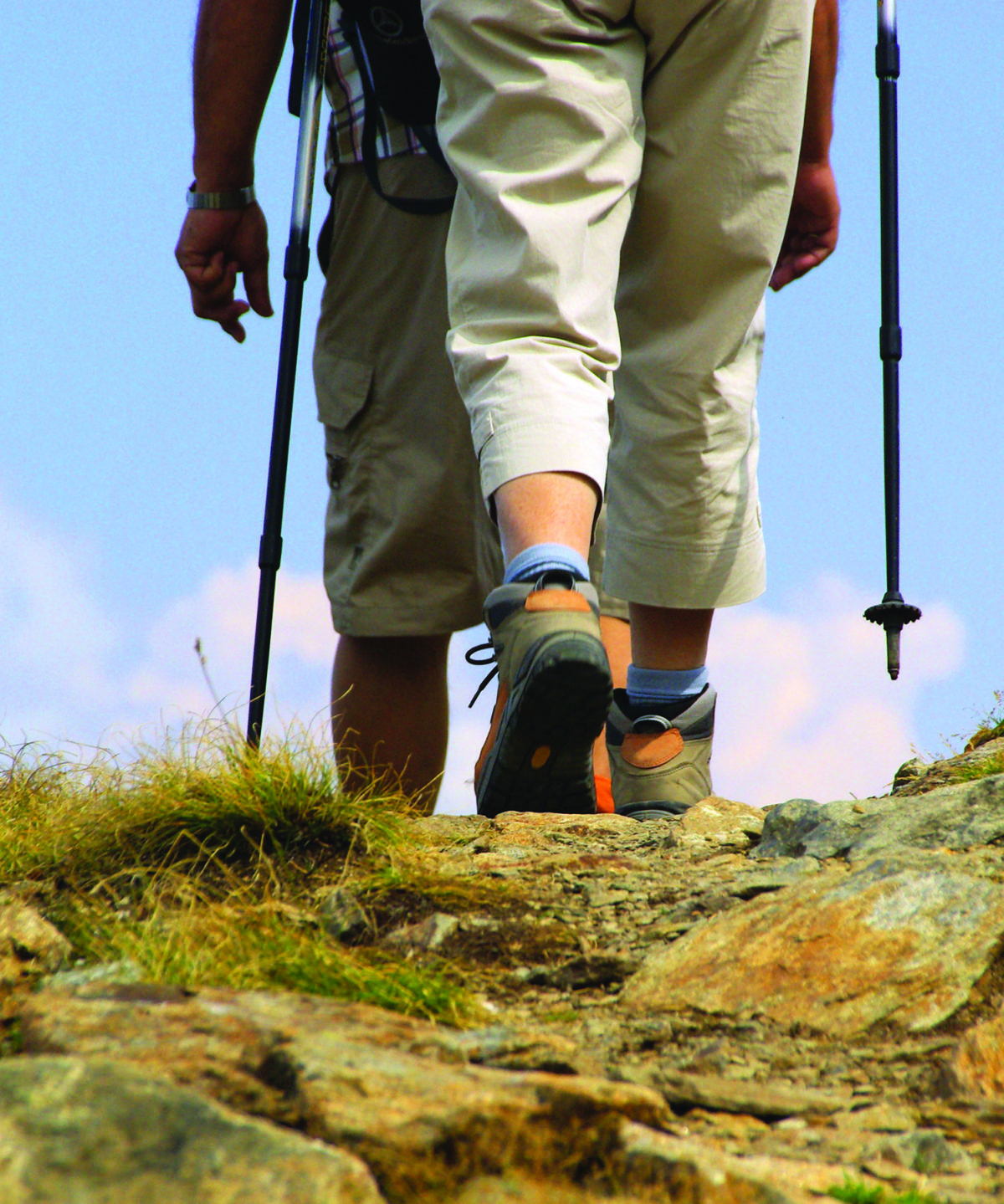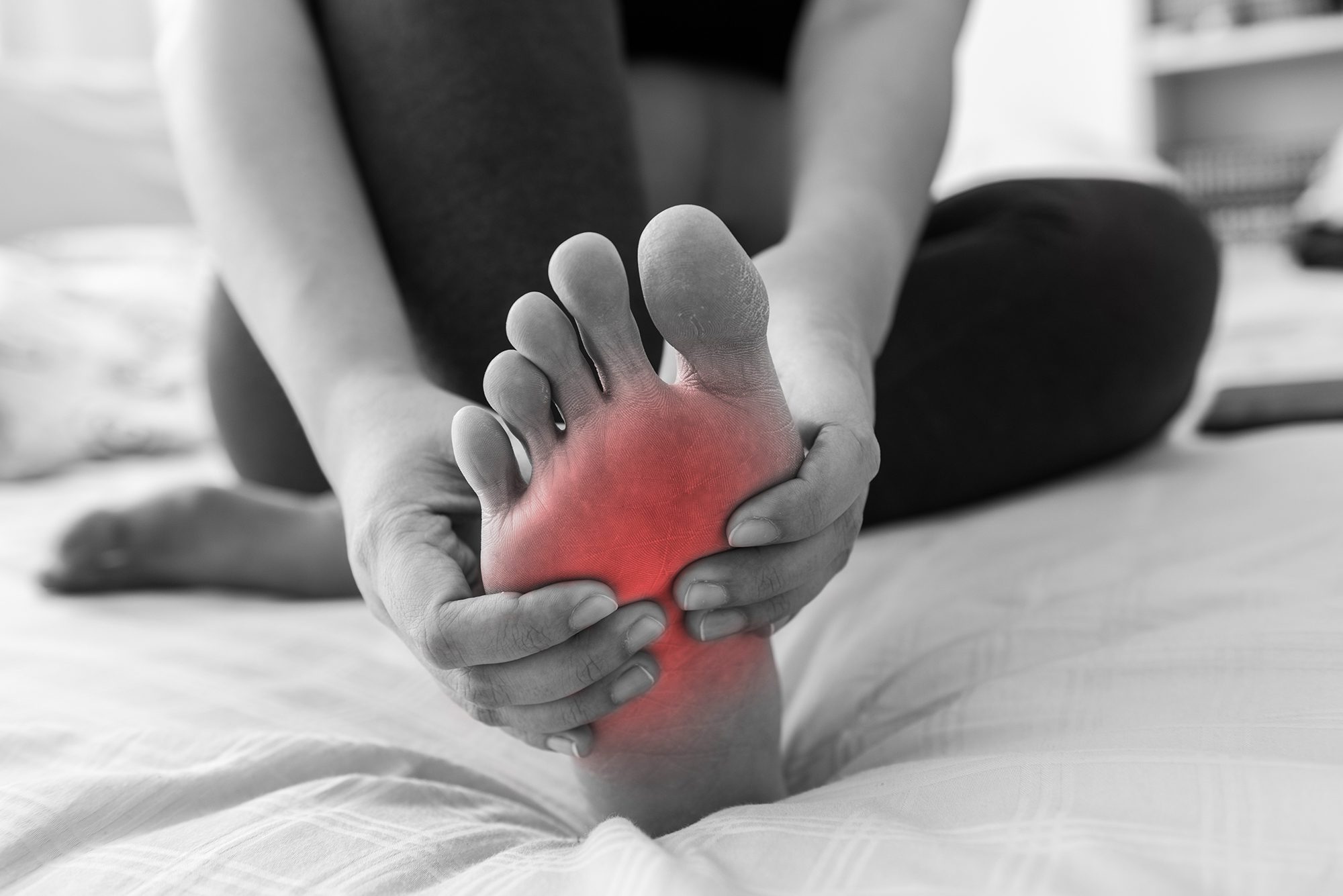Summer is upon us, folks! It’s time to lace up those hiking boots and dust off your trekking poles. As the weather warms and the mountain snow melts, many of us are emerging from our collective hibernations and preparing to enjoy all the natural splendors that our beautiful Montana has to offer, one trail at a time. Keeping yourself healthy during these spring and summer months should be high on your priority list. Here are a few tips and tricks to keep you moving this season.
Whether you are an experienced hiker or are new to the world of “outdoorsiness,” it is important to be prepared for your upcoming excursions. According to Chinese proverbial wisdom, the journey of a thousand miles begins with a single step. First, let’s make sure that step is a good one by strapping on the right pair of kicks. Do me a favor. Take a quick look at your feet and tell me whether those old shoes of yours are going to get you up that mountain and back without your dogs a-barkin’. Blisters are no fun, people. Truthfully, proper footwear is key in preventing the 3 most common hiking-related injuries: knee pain, ankle pain, and foot ache. Just like a house, your foundation is imperative in ensuring reliable stability. Ditch those worn-out loafers and step up your shoe game. There are multiple resources online to help you choose the right ones for you.
Okay, you’ve got your new shoes on, you’re feeling like a million bucks, and you’re ready to take on the world. What’s next? Any outing should begin with a solid dynamic warmup. Get that blood pumping a bit with some easy movements so you can be limbered up and raring to go for the big climb.
- Neck and shoulder rotations as well as torso twists are a good way to get that upper body loosened up, especially if you’re carrying a backpack.
- Walking high knees, butt kicks, lunges, and leg swings will get your body moving and prep those legs to keep you moving forward.
As mentioned before, knee pain is one of the most common complaints from avid hikers. Aside from wearing the right shoes (You did it. Congratulations!), there are a few things you can do to ensure your knees don’t lead to an early end to your hiking season.
- Trekking poles can be quite useful in reducing the strain on your legs during a long hike. They lend stability on uneven ground and can help to prevent the ever-troublesome slips, trips, and falls.
- There are several exercises you can perform before or after your hike to help alleviate or prevent pain.
- Lateral Hip Stretch
- Use a wall or sturdy surface for support if needed while completing this exercise.
- While standing, cross your right leg in front of the left and press both feet firmly into the ground.
- Bring your right-hand overhead to ease further into the stretch.
- Then, lean to the left until you feel a stretch along your knee and outer hip.
- Hold this stretch for between 30 seconds and 2 minutes before switching to the opposite side.
- Hamstring Stretch
- Stand with your feet shoulder-width apart. Step your right foot forward and then flex your foot upwards.
- Bend at the hips, shifting your weight back towards your left foot until you feel the stretch in your right hamstring. Place both hands on your right thigh to push further into the stretch.
- Hold for between 30 seconds and 2 minutes before switching to the left leg.
- Quadricep Stretch
- Use a wall or sturdy surface for support if needed while completing this exercise.
- Stand upright with good posture (shoulders open, core engaged, and body in alignment) with your feet together.
- Raise your left heel up behind you and then grab your foot with your left hand.
- With a slight bend in your right leg, pull your left foot upwards towards your bum until you feel a stretch in your left quadricep.
- Hold the position for between 30 seconds and 2 minutes before moving to the opposite leg.
- Lateral Hip Stretch
Another injury sure to impact your hiking prowess is an ankle sprain or strain. Aside from wearing proper footwear, the use of trekking poles can once again help to avoid any unfortunate mishaps with your ankles. If you have a pre-existing ankle problem or begin to feel tightness in your ankles or calves, these stretches and exercises can be added to your pre or post-hike routine to get rid of those pesky issues.
- Calf Stretch
- Stand with your hands placed against a wall or sturdy surface. Bring your right foot slightly in front of you.
- Place the heel on the ground and position your toes up onto the wall.
- Gently lean towards the wall with your body in a straight line until you feel a stretch in the right calf.
- Hold this position for between 30 seconds and 2 minutes and then release before switching to the left.
- Soleus Stretch
- Stand with your hands placed against a wall. Place the left foot back with the right foot forward in a slight lunge position.
- Push towards the wall, keeping your heels against the ground, and then slightly bend your left knee.
- Hold this position for between 30 seconds and 2 minutes then release.
- Ankle Circles
- This exercise can be performed sitting or lying down as well as standing if there is something sturdy nearby for support.
- Start by turning your right ankle clockwise. Perform 10 repetitions before moving the ankle counterclockwise. Then switch to your left ankle and complete the exercise in a similar manner.
While many foot problems can be kept in check by choosing proper socks and footwear, foot pain (beyond blisters) can creep in while hiking and backpacking. Like with your knees and ankles, you can perform a few exercises and stretches to strengthen your feet to keep them mobile.
- Toe Raise, Point & Curl
- This exercise intends to improve your overall foot flexibility and mobility and includes three stages of movement.
- Sit down with your feet flat on the floor.
- With your toes on the floor, raise your heels until only the balls of your feet remain on the ground. Hold this position for 5 seconds and then lower the heels.
- Next, raise your heels a second time. As your heels move upward begin to point your toes. Continue raising your heels until only your big and second toes touch the ground.
- Hold again for 5 seconds before releasing your toes and lowering your heels.
- Then curl your toes inward and raise your heels a third time. Once only the tips of your toes are on the ground, hold the position for 5 seconds.
- Complete each stage 10 times.
- Toe Extension
- After a long day of trekking, this exercise can help stretch and relieve pain in an achy foot.
- Sit on a chair with your feet flat on the floor.
- Bring your right foot up onto the right thigh.
- With your hand, pull the toes upwards towards the ankle so you can feel the stretch along the bottom of the foot and heel cord.
- Hold the position for 10 seconds, massaging the arch of the stretched foot if desired.
- Repeat this exercise 10 times on each foot.
As with any condition, if your symptoms persist and are not relieved by these stretches and exercises, don’t hesitate to get in touch with your friendly neighborhood physical therapist at Peak Physical Therapy. We’d be happy to bring you in for a free screen and discuss treatment options with you.
A couple last-minute tips before you get out and kick up some dust on the trail:
- It is recommended to drink about 2 cups of water (16oz) for every hour of hiking. Hydration is extremely important as the days get hotter and you increase your activity level. The dangers of dehydration include muscle cramps, depression, constipation, hypertension, kidney stones, joint complications, and even death. So beat the heat and stay hydrated!
- Keep an eye on the air quality index. As we well know, summer in Montana is fire season. The EPA recommends that we all limit rigorous outdoor activities when the air quality reaches 100 or above on the AQI (Air Quality Index). If it is visibly smoky outside, check that AQI and see if it’s the right time for a hike. Maybe consider moving your exercise indoors, choosing a less strenuous trail, or shortening the time you’re out in the elements.
With all of that in mind, you are ready to get out and enjoy these beautiful days in our beautiful state. Keep checking our blog for more tips and tricks for how to keep your body moving, grooving, and always improving. Cheers.
—-
Dr. Jonathan Z. Aldrich
PT, DPT, CSCS




